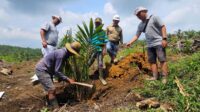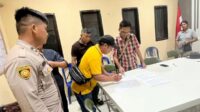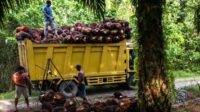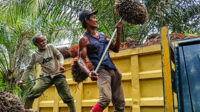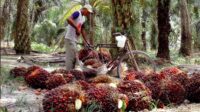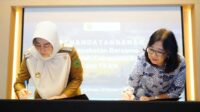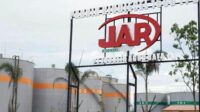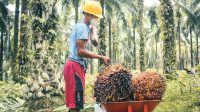PALMOILMAGAZINE, JAKARTA – The Smallholder Palm Oil Replanting Program (PSR) remains a double-edged sword. While designed to boost productivity by replacing aging and unproductive palm trees, it continues to face steep challenges — from high fresh fruit bunch (FFB) prices that discourage farmers from cutting down their old palms, to persistent issues of land legality and complex requirements.
Across Indonesia’s aging plantations, thousands of oil palm trees stand tall but weary, their yields dwindling with age. Most are over 25 years old—long past their productive prime. Yet for smallholders, felling these trees means cutting off their income source. This is where the PSR story unfolds: a struggle between the promise of renewal and the weight of reality.
Setiyono, Chairman of the Indonesian Plasma Smallholders Association (Aspekpir), shared the farmers’ perspective.
Also Read:
“Nearly 90 percent of replanting so far has come from former PIR-Trans schemes. But many farmers have since joined other organizations due to today’s open social and political landscape,” he said.
To him, organizational affiliation is secondary — what matters is keeping the spirit of replanting alive. Yet, progress remains slow.
“The government has done a great job — the replanting grant increased from IDR25 million to IDR60 million per hectare. But realization is still lagging,” he told beige-heron-208544.hostingersite.com in late April 2025.
According to Setiyono, the biggest hurdle lies in land legality. While Aspekpir’s members have largely resolved this issue, in many regions it remains a complex and time-consuming barrier.
“Many farmers are waiting for the IDR60 million fund disbursement, holding back for now. But as FFB prices rise, enthusiasm is returning. Our target is 180,000 hectares this year,” he added.
Also Read: Palm Oil Farmers and Companies Declare Commitment to Child- and Women-Friendly Practices
Of Aspekpir’s total 800,000 hectares under management, most members have yet to apply — not out of unwillingness, but due to lengthy administrative procedures.
Meanwhile, Normansyah Hidayat Syahruddin, Director of the Plantation Fund Management Agency (BPDP), elaborated on how the PSR program is structured. His agency plays a key role in financing replanting efforts.
“Since 2016, we’ve disbursed around IDR10 trillion to support PSR across 38,404 hectares,” he revealed, noting that grants can now reach up to IDR60 million per hectare.
There are two main pathways under the PSR scheme: partnership-based and independent. The partnership model — which involves companies as technical mentors — is expected to be more effective. Yet, in practice, only 11 percent of PSR applications use this route. Once again, land legality stands as the biggest bottleneck.
“The process can actually move quickly. Once verification and technical recommendations (rekomtek) are completed, funds can be released within a month. But if land requirements aren’t met, the program stalls midway,” Normansyah explained during the Aspekpir National Working Meeting in Jakarta.
Despite the obstacles, both government and farmer organizations remain determined to push forward. The PSR program is not just about replanting trees — it’s about ensuring the future productivity and sustainability of Indonesia’s palm oil sector. (T2)








